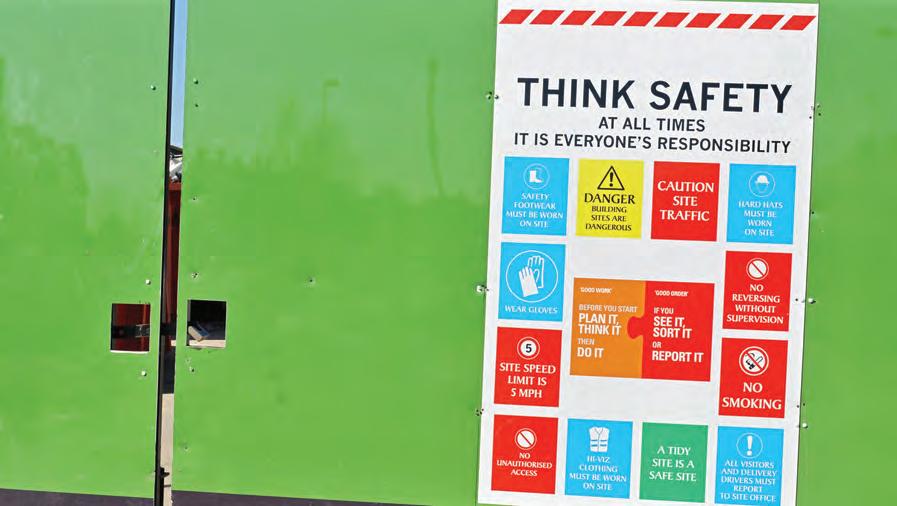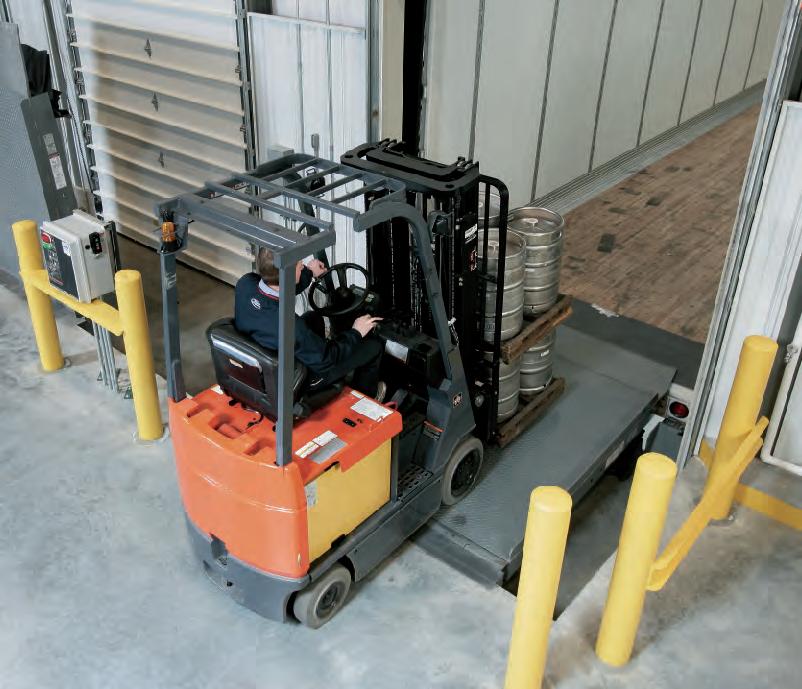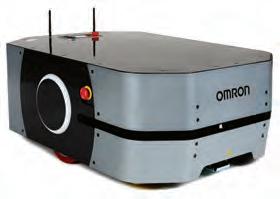
3 minute read
AUTOMATION Robotics orders are up in North America, and there are some new products available that will improve production
Orders are up across North America as new products hit the market.
BY PLANT STAFF
Robot orders were up in 2019, despite slowing global economic growth and disruptions to trade resulting from US tariff wars and other factors that raised the uncertainty level for businesses. As 2020 gets underway, robotics innovators and systems providers have new products for manufacturers in the mood to enhance their automated processes.
First some numbers. The Robotic Industries Association (RIA), part of the Association for Advancing Automation (A3) based in Ann Arbor, Mich., reports 29,988 units were ordered in North America, a 1.6% increase over 2018, although revenue was down 1.3%, closing the year at $1.681 billion.
The International Federation of Robotics forecasts almost 2 million new robot units will be installed in factories around the world from 2020 to 2022. Research firm ResearchAndMarkets.com estimated the global market was valued at US$34 billion in 2019 and forecasts a double-digit compound annual growth rate over 2020-2025.
“While 2019 was a challenging year and the outlook for growth in 2020 is murky, we’re still seeing growing interest in automation technologies and solutions that will lead to continued future growth,” said Jeff Burnstein, A3 and RIA president. Canadian orders were up 25.6% from 2,415 units to 3,033. Shipments were essentially level, rising 1% from 3,050 to 3,080 for the year.
Canadian manufacturers may be slower to invest in Industry 4.0 technologies than their peers in the US and elsewhere, but there is recognition automation is key to production efficiency and competitive advantage. The 2020 Advanced Manufacturing Survey conducted by Interest is growing in automation technologies. PHOTO: PHOTOCREO BEDNAREK - STOCK.ADOBE.COM
What’s new in ROBOTICS TECH THAT ENHANCES AUTOMATED PROCESSES
BDO Canada LLP and PLANT Magazine shows 44% of the 251 leaders of mostly small and medium-size Canadian enterprises said their companies were spending on robotics. Forty-eight per cent of those spent an average of $147,083 in 2019. About a third of respondents intended to invest in robotics over the next three years.
Manufacturers of automation systems and machinery have some ideas for those who are ready to invest. Here’s a sampling of some new offerings: allowing manufacturers to print products in 3D within minutes. The global technology company, based in Zurich, Switzerland (Canadian headquarters in Montreal), has found a way around time-consuming plotting of points and trajectories with its 3D Printing PowerPac.
Any standard slicer software design is translated into ABB’s simulation environment and robot code. This means an operator moves from CAD design to final modelling in just 30 minutes. https://new.abb.com
Shorter design to modelling time.
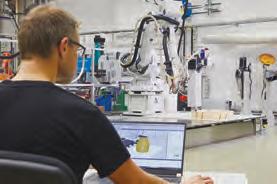
Faster 3D printing. New software from ABB Robotics eliminates manual programming, For end-of-arm tooling. Yaskawa America Inc.’s six-axis SP235 high-payload (235 kg) robot reduces air-cut time with its quick axis speeds and acceleration. The manuWide wrist motion range. facturer of automation systems in Waukegan, Ill. says high moment and inertia ratings accommodate a wide range of spot guns and other end-ofarm tooling. A slim profile lets it reach into tight spaces and high-density layouts. Its vertical reach is 3,490 mm; horizontal is 2,710 mm. Programming for complicated parts is simplified with wide wrist motion range for greater application flexibility. www.yaskawa.com
Monitors data to detect trends.
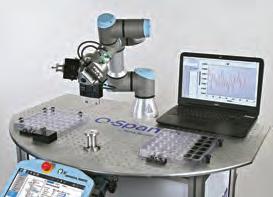
Quality control. New Scale Robotics, a manufacturer of automation tools in Victor, NY, has come up with an automated alternative for SMEs that are manually measuring parts with digital calipers for quality control in high-mix, small-batch manufacturing environments.
The Q-Span system integrates easily into the quality control lab or on the production floor with up to three gripper/caliper tools on a collaborative robot. It picks up small parts, measures multiple dimensions, makes in-process decisions based on measurements (for example, pass/fail or sort by range), and places each part in the appropriate tray or bin.
All data is recorded to a PC for later analysis and statistical process control (SPC), but also monitored in real time to detect trends and alert operators to process drift.
A Q-Span System handles small parts weighing up to 100 grams and measuring up to 100 mm. Measurement resolution is 0.0001 in. (2.5 μm) with better than 0.0002 in. (5 μm) repeatability and 0.0006 in. (15 μm) accuracy. www.newscalerobotics.com







